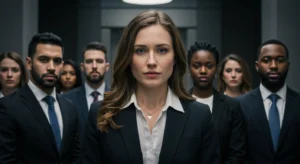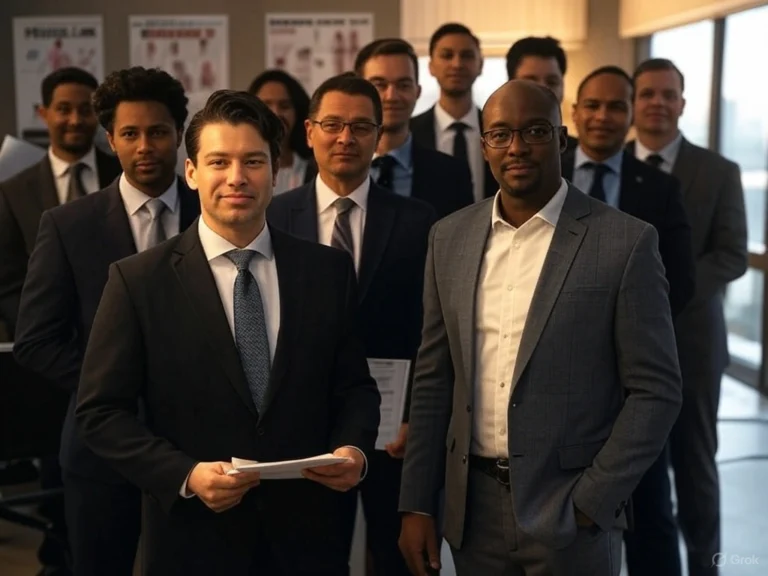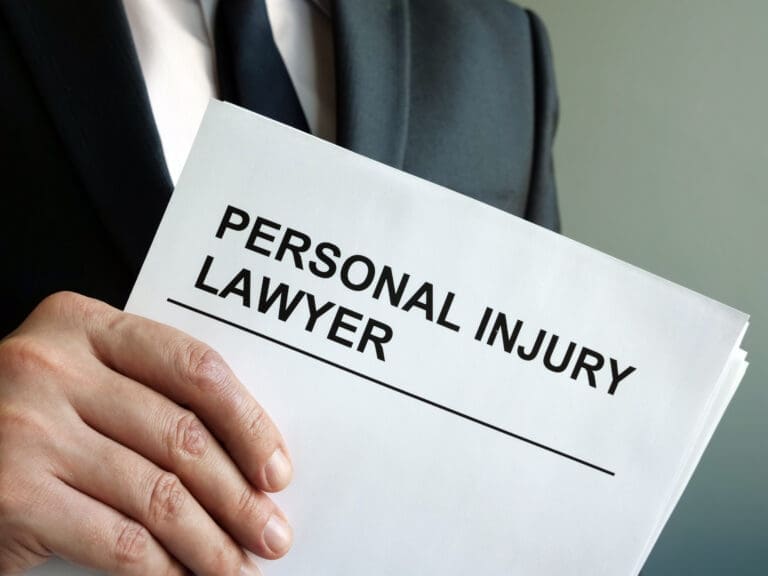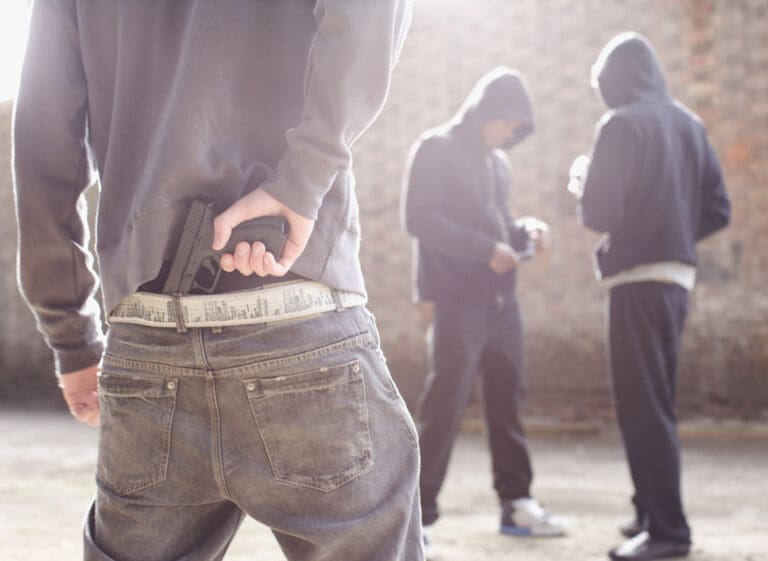
En grand jury indictment process stands as one of the most misunderstood yet fundamental components of our criminal justice system. Dating back to 12th century England, grand juries have served as a buffer between government power and individual liberty, ensuring that serious criminal charges are not brought without sufficient evidence. Unlike the dramatic courtroom scenes portrayed in popular media, grand jury proceedings occur behind closed doors, shrouded in secrecy and governed by strict constitutional principles.
The Fifth Amendment to the United States Constitution explicitly guarantees that “No person shall be held to answer for a capital, or otherwise infamous crime, unless on a presentment or indictment of a grand jury.” This constitutional protection reflects the Framers’ deep concern about potential abuses of prosecutorial power and their commitment to ensuring that serious criminal charges receive preliminary scrutiny before a citizen faces trial. The secret proceedings of grand juries serve not merely as a procedural formality but as a substantive check on government authority.
Comprender la grand jury system requires examining its historical foundations, constitutional underpinnings, and practical operation in modern criminal law. While critics argue that grand juries too often serve as rubber stamps for prosecutors, defenders maintain that the system provides essential protections against unwarranted prosecutions. This tension between prosecutorial efficiency and individual rights defines much of the ongoing debate about the proper role of grand juries in our justice system.
Historical Origins and Constitutional Foundations
The grand jury system traces its lineage to medieval England, where it emerged as a check on the monarchy’s power. King Henry II formalized the process in 1166 through the Assize of Clarendon, establishing juries to accuse those suspected of crimes. Unlike modern juries that determine guilt or innocence, these early grand juries functioned primarily as accusatory bodies, identifying potential wrongdoers for subsequent prosecution.
When the American colonies established their legal systems, they imported the grand jury as a fundamental component. The Founders, wary of potential governmental overreach, enshrined the grand jury requirement in the Fifth Amendment, reflecting their belief that this institution would serve as a “shield” against unfounded prosecutions. This constitutional protection demonstrates the significant value placed on preventing arbitrary criminal charges.
The Supreme Court’s interpretation of the Fifth Amendment has evolved over time, particularly regarding its application to state prosecutions. In the landmark case of Hurtado v. California (1884), the Court held that the grand jury requirement does not bind state courts through the Fourteenth Amendment. Consequently, while federal felony prosecutions require grand jury indictments, states may employ alternative methods such as preliminary hearings to determine whether sufficient evidence exists to charge an individual with a crime.
Grand Jury Selection and Composition
The process begins with the selection of grand jurors from the same pool as regular trial jurors. However, grand jurors typically serve for extended periods—often several months—during which they may review multiple cases. Federal grand juries consist of 16 to 23 citizens, with at least 16 members required to be present for a vote on an indictment.
Grand jurors are selected to represent a cross-section of the community, though the selection process varies by jurisdiction. Potential jurors receive summonses based on voter registration records, driver’s license databases, or other public records. After initial screening, those who meet basic qualifications undergo questioning to determine their suitability for service.
Unlike trial juries, which require unanimity in federal criminal cases, grand juries operate under a different standard. Federal rules require that at least 12 grand jurors must concur to issue an indictment. State requirements vary, ranging from simple majority to supermajority (two-thirds or three-quarters agreement) depending on the jurisdiction. This lower threshold reflects the preliminary nature of the grand jury’s determination—finding probable cause rather than guilt beyond a reasonable doubt.
The Prosecutor’s Role and Presentation of Evidence
The prosecutor serves as the primary orchestrator of grand jury proceedings, presenting evidence and witnesses to establish probable cause. Unlike trial proceedings, where both prosecution and defense present their cases, grand jury hearings are dominated by the prosecutor, who decides which evidence to present and which witnesses to call.
Prosecutors possess significant discretion in how they present cases to grand juries. They may introduce physical evidence, documents, photographs, and witness testimony. They also explain relevant laws to the grand jurors and answer their legal questions. This one-sided presentation has led critics to suggest that prosecutors can effectively steer grand juries toward their desired outcomes.
The standard of causa probable that governs grand jury deliberations represents a lower threshold than the “beyond a reasonable doubt” standard required for criminal convictions. Probable cause merely requires reasonable grounds to believe that a crime has been committed and that the accused committed it. This lower standard, combined with the prosecutor’s control over the proceedings, explains why grand juries typically return indictments in the vast majority of cases presented to them.
Witness Testimony and Rights
Witnesses called before grand juries face a significantly different environment than those testifying at trial. They testify under oath, but without the presence of their attorneys in the grand jury room. This limitation places witnesses in a vulnerable position, as they must navigate complex questioning without immediate legal guidance.
While witnesses may consult with their attorneys outside the grand jury room, this arrangement creates practical challenges. Witnesses must interrupt their testimony to seek advice, potentially disrupting the flow of questioning and creating an impression of evasiveness. This restriction on attorney presence stands in stark contrast to trial proceedings, where witnesses have counsel present throughout their testimony.
Grand jury witnesses retain their Fifth Amendment right against self-incrimination. If a witness invokes this right, prosecutors may offer immunity to compel testimony. Once immunized, witnesses must testify truthfully or face potential perjury charges. This immunity mechanism serves as a powerful tool for prosecutors seeking information from reluctant witnesses who fear criminal exposure.
Secrecy Requirements and Justifications
Grand jury secrecy represents one of the most distinctive and controversial aspects of the process. Federal Rule of Criminal Procedure 6(e) and similar state provisions impose strict confidentiality requirements on grand jury proceedings. These rules generally prohibit grand jurors, prosecutors, and court personnel from disclosing matters occurring before the grand jury.
Several traditional justifications support this secrecy requirement. First, secrecy prevents the escape of those who might be indicted. Second, it ensures that those under investigation who are ultimately not charged do not suffer reputational harm. Third, it prevents witness tampering or juror influence. Fourth, it encourages witnesses to testify fully and frankly without fear of retaliation. Finally, it protects grand jury deliberations from external pressures.
The consequences for violating grand jury secrecy can be severe. Individuals who improperly disclose grand jury information may face contempt charges, professional discipline, and even criminal prosecution. In one notable case, a former grand juror who leaked information related to mob prosecutions received an eight-year prison sentence. More recently, a lawyer who disclosed information from a steroids investigation received a two-and-a-half-year sentence, underscoring the serious consequences of breaching grand jury confidentiality.
The Deliberation Process
After the prosecutor presents evidence, grand jurors deliberate in private to determine whether probable cause exists. Unlike trial deliberations, which focus on guilt beyond a reasonable doubt, grand jury deliberations address the preliminary question of whether sufficient evidence exists to justify a trial.
During deliberations, grand jurors may request additional evidence or witness testimony if they believe more information is necessary. They may also ask the prosecutor to clarify legal standards or factual matters. This ability to seek supplemental information provides grand juries with some measure of independence, though critics argue that jurors rarely exercise this authority effectively.
The deliberation culminates in a vote on whether to issue an indictment, often called a “true bill.” If the required number of jurors finds probable cause, the indictment proceeds. If not, the grand jury returns a “no bill,” and the case typically ends, though prosecutors may present the case to another grand jury in some circumstances. This decision-making process reflects the grand jury’s historical role as a check on prosecutorial power, though the effectiveness of this check remains debated.
Indictment Issuance and Subsequent Proceedings
When a grand jury returns an indictment, the document formally charges the defendant with specific crimes. The indictment must contain a “plain, concise, and definite written statement of the essential facts constituting the offense charged” as required by federal rules. This document provides the defendant with notice of the charges and serves as the foundation for subsequent proceedings.
After indictment, the case proceeds to arraignment, where the defendant appears in court to hear the charges and enter a plea. The arraignment marks the formal beginning of the trial process and triggers various procedural rights, including the right to counsel, the right to discovery of evidence, and the right to a speedy trial.
The transition from grand jury proceedings to public court proceedings represents a significant shift in the case’s nature. While grand jury proceedings remain secret, subsequent court proceedings generally occur in public, subject to constitutional requirements for open courts. This transition from secrecy to transparency reflects the different purposes served by these distinct phases of the criminal justice process.
Federal vs. State Grand Jury Systems
The Fifth Amendment’s grand jury requirement applies directly only to federal prosecutions. As noted earlier, the Supreme Court’s decision in Hurtado v. California established that states are not constitutionally required to use grand juries. Consequently, state systems exhibit significant variation in their charging procedures.
Approximately half the states require grand jury indictments for certain serious felonies, while others make grand juries optional or do not use them at all. States that do not require grand juries typically employ preliminary hearings, where judges determine whether probable cause exists in adversarial proceedings where defendants have representation. This diversity reflects federalism’s allowance for state experimentation in criminal procedure.
Even in states that use grand juries, procedures often differ from federal practice. Some states permit defense attorneys to present evidence to grand juries in limited circumstances. Others allow defendants to testify before grand juries upon request. These variations demonstrate that grand jury practice continues to evolve as jurisdictions balance efficiency, fairness, and constitutional requirements.
Criticisms and Reform Proposals
Critics have long characterized grand juries as “rubber stamps” for prosecutors, pointing to high indictment rates as evidence of their ineffectiveness as a check on prosecutorial power. The famous quip that a prosecutor could “indict a ham sandwich” reflects widespread skepticism about grand juries’ independence and critical judgment.
Several structural features contribute to this criticism. The ex parte nature of proceedings, where only the prosecution presents evidence, creates an inherently one-sided process. The absence of defense counsel, judge, and cross-examination removes traditional safeguards against weak or misleading evidence. The lower “probable cause” standard further increases the likelihood of indictment compared to conviction at trial.
Reform proposals range from incremental adjustments to wholesale replacement. Some advocate for allowing defense attorneys to present exculpatory evidence to grand juries. Others suggest requiring prosecutors to present exculpatory evidence they discover. More radical proposals include replacing grand juries with preliminary hearings or creating a “grand jury counsel” independent of the prosecutor to assist jurors. These proposals reflect ongoing efforts to balance the system’s historical role with modern concerns about fairness and effectiveness.
Special Grand Juries and Complex Investigations
Special grand juries differ from regular grand juries in several important respects. They typically serve for longer periods—up to 36 months—and often focus on complex matters such as organized crime, public corruption, or financial fraud. Their extended service allows them to develop expertise in complicated subject matter and to conduct thorough investigations over time.
Special grand juries possess enhanced investigative powers, including the ability to issue reports on their findings even without returning indictments. These reports may address systemic issues, patterns of criminal activity, or public corruption. However, courts typically review such reports before release to ensure they do not unfairly damage reputations without providing due process.
The use of special grand juries in high-profile or politically sensitive cases highlights both their strengths and limitations. Their independence and secrecy can facilitate thorough investigation of powerful interests, but these same features raise concerns about accountability and potential abuse. The tension between investigative effectiveness and procedural fairness remains particularly acute in these complex cases.
Constitutional Challenges and Supreme Court Jurisprudence
The Supreme Court has addressed various aspects of grand jury practice throughout American history. In Costello v. United States (1956), the Court held that indictments based solely on hearsay evidence do not violate the Constitution, giving prosecutors significant latitude in the evidence they present. In United States v. Williams (1992), the Court ruled that prosecutors have no constitutional obligation to present exculpatory evidence to grand juries.
These decisions generally reflect judicial deference to grand jury procedures and reluctance to impose significant constraints on prosecutorial discretion. The Court has emphasized the historical role of grand juries as accusatory rather than adjudicative bodies and has declined to import trial-type procedural requirements into the grand jury context.
Despite this general deference, the Court has recognized some limitations on grand jury authority. For example, in United States v. Calandra (1974), the Court held that while grand juries may consider evidence obtained in violation of the Fourth Amendment, this does not legitimize the underlying constitutional violation. This nuanced approach reflects the Court’s attempt to balance grand jury effectiveness with constitutional protections.
Witness Rights and Protections
Witnesses before grand juries navigate a complex legal landscape with significant risks and limited protections. While they retain their Fifth Amendment right against self-incrimination, exercising this right often leads prosecutors to seek immunity orders, effectively removing the basis for refusing to testify.
The Supreme Court has recognized some protections for grand jury witnesses. In Butterworth v. Smith (1990), the Court held that witnesses generally may disclose their own testimony after the grand jury’s term ends, though they remain prohibited from revealing other aspects of the proceedings. This limited transparency provides some protection against potential abuse.
Witnesses who receive “use immunity” gain protection only against the use of their testimony and its fruits in subsequent prosecutions. This limited immunity differs from “transactional immunity,” which would protect against any prosecution for matters discussed in testimony. Understanding these distinctions proves crucial for witnesses navigating grand jury appearances with the assistance of counsel.
The Role of Defense Counsel
Although attorneys cannot accompany clients into federal grand jury rooms, they play vital roles before and after testimony. Counsel can prepare witnesses by explaining the process, discussing potential questions, and clarifying the scope of immunity if applicable. They can also wait outside the grand jury room to consult with clients during breaks in testimony.
Defense attorneys representing potential defendants (rather than witnesses) face different challenges. They may submit “target letters” requesting that their clients be allowed to testify, though prosecutors typically deny such requests. They may also negotiate with prosecutors to avoid indictment through cooperation agreements or plea bargains before formal charges.
The limited role of defense counsel in grand jury proceedings contrasts sharply with their central role in trials. This disparity reflects the different purposes of these proceedings—grand juries determine probable cause in an investigative setting, while trials determine guilt beyond reasonable doubt in an adversarial context. Nevertheless, this limitation represents one of the most frequently criticized aspects of the grand jury system.
Grand Jury Secrecy Exceptions and Disclosure
While grand jury secrecy remains the general rule, several exceptions permit disclosure in specific circumstances. Federal Rule of Criminal Procedure 6(e) authorizes disclosure to government attorneys for use in their official duties, to government personnel assisting prosecutors, and to another grand jury, among other limited exceptions.
Courts may also order disclosure of grand jury materials in certain situations. The Supreme Court recognized in Douglas Oil Co. v. Petrol Stops Northwest (1979) that parties seeking disclosure must demonstrate a “particularized need” that outweighs the interest in continued secrecy. This standard creates a significant barrier to disclosure while acknowledging that secrecy is not absolute.
Recent controversies involving high-profile cases have generated renewed debate about grand jury secrecy. For example, litigation seeking disclosure of grand jury materials related to police use-of-force incidents has highlighted tensions between traditional secrecy justifications and public demands for transparency in cases of significant public interest. These debates reflect evolving views about the proper balance between secrecy and accountability in our justice system.
Comparaciones internacionales
The American grand jury system differs significantly from charging procedures in other common law countries. England, the grand jury’s birthplace, abolished the institution in 1933, replacing it with committal proceedings before magistrates. Canada similarly abandoned grand juries in most provinces, though it retained preliminary hearings as a check on prosecutorial charging decisions.
Civil law countries typically employ investigating magistrates who conduct pre-trial investigations with judicial oversight. These magistrates gather evidence, interview witnesses, and determine whether sufficient grounds exist for trial. This approach provides judicial supervision of the investigative process rather than citizen oversight through a grand jury.
These international differences highlight that various models can satisfy the fundamental goal of screening criminal charges before trial. Each approach balances different values—citizen participation, efficiency, judicial oversight, and protection of individual rights. The persistence of the grand jury in American federal courts reflects both constitutional requirements and cultural attachment to citizen participation in the justice system.
Practical Considerations for Practitioners
Attorneys advising clients involved with grand juries must navigate complex strategic considerations. For witnesses, key decisions include whether to assert Fifth Amendment rights, whether to accept immunity if offered, and how to prepare for testimony without counsel present in the grand jury room.
For potential defendants, attorneys must consider whether to seek an opportunity to testify (rarely granted but occasionally strategic), whether to negotiate before indictment, and how to prepare for the likelihood of charges. Attorneys may also challenge grand jury procedures through motions to dismiss indictments, though such challenges rarely succeed given judicial deference to grand jury operations.
Prosecutors face different considerations, including which witnesses to call, what evidence to present, and how to explain complex legal concepts to grand jurors. Ethical prosecutors recognize their responsibility to present cases fairly despite the ex parte nature of proceedings. This responsibility includes avoiding misleading presentations and correcting material misstatements that might influence the grand jury’s decision.
Recent Developments and Trends
In recent years, several jurisdictions have implemented reforms to address perceived deficiencies in grand jury proceedings. Some states now require prosecutors to present exculpatory evidence to grand juries. Others record grand jury proceedings to enhance accountability. A few permit greater defense participation in limited circumstances.
Technology has also influenced grand jury practice. Electronic evidence now frequently features in presentations, and some jurisdictions allow remote witness testimony in certain circumstances. These technological adaptations have become particularly relevant during public health emergencies that complicate in-person proceedings.
Public attention to grand jury proceedings has intensified following controversial decisions in high-profile cases, particularly those involving police use of force. This scrutiny has prompted calls for greater transparency and procedural reforms. While wholesale changes to the federal grand jury system would require constitutional amendment, state systems continue to evolve in response to changing public expectations and practical concerns.
Conclusión
En grand jury indictment process embodies fundamental tensions in our criminal justice system—between prosecutorial efficiency and individual rights, between secrecy and transparency, between historical practice and modern expectations. Its constitutional foundations reflect the Framers’ concern with preventing arbitrary prosecutions, while its practical operation reveals the challenges of implementing this protection in a complex legal environment.
Understanding grand jury proceedings requires appreciating both their strengths and limitations. As a preliminary screening mechanism, grand juries can prevent truly unfounded charges from proceeding to trial. However, their ex parte nature and prosecutor-dominated process limit their effectiveness as a robust check on prosecutorial power in many cases.
The ongoing debate about grand jury reform reflects broader questions about the proper balance of values in our criminal justice system. As this ancient institution continues to evolve, the challenge remains to preserve its core function as a shield against arbitrary prosecution while addressing legitimate concerns about fairness, transparency, and effectiveness. The secret proceedings of grand juries will likely remain controversial, but their constitutional role ensures they will continue to shape American criminal justice for generations to come.
Citations:
- How a Grand Jury Functions
- Grand Jury Indictments Overview
- Justice Department Charging Process
- Best Keywords for Attorneys
- Fifth Amendment Annotations
- Grand Jury Secrecy Challenges
- Meaning of Grand Jury Indictment
- Fifth Amendment Legal Overview
- What Is a Grand Jury
- New York Grand Jury Handbook
- Justice Manual Grand Jury Guidelines
- Secret Justice in Grand Juries
- Grand Juries in the United States
- Grand Jury General Overview
- Witness and Grand Jury Secrecy
- Federal Grand Jurors Handbook
- Grand Jury Legal Definition
- Grand Jury Disclosure Rules
- Orange County Grand Jury FAQs
- Congressional Report on Grand Juries
- State Grand Jury Secrecy Variations
- Grand Jury vs Trial Discussion
- Handbook for Federal Grand Jurors
- Prosecutors Choosing Grand Juries
- Kansas Grand Jury Testimony
- Grand Jury Business Functions
- Greater Disclosure in Grand Juries
- Federal Grand Jury Subpoena Guide
- Balancing Grand Jury Secrecy
- High Volume Low Competition Keywords
- Pennsylvania Fracking Report
- Keyword Research Part One
- Finding Low Competition Keywords
- Grand Jury Process Video
- Understanding Grand Jury Indictments
- Guam Grand Jury Code
- Federal Grand Jury Job Posting
- Restoring Legitimacy in Grand Juries
- Fifth Amendment Grand Jury Essay
- Grand Juries and Fifth Amendment
- Federal Rules Grand Jury Procedure
- Grand Jury Clause Doctrine
- Alabama Grand Jurors Handbook
- Alaska Grand Jury FAQs
- Grand Jury Community and Law
- National Center Grand Jury Report
- Federal Grand Jury Process
- Florida Grand Jury Secrecy Exceptions
- Low Competition Keywords Guide
- How to Find Low Competition Keywords
- American Grand Jury System Overview
- Low Competition Keywords Strategy
- Grand Jury and Preliminary Hearings
- Top AdWords Keywords for Attorneys








